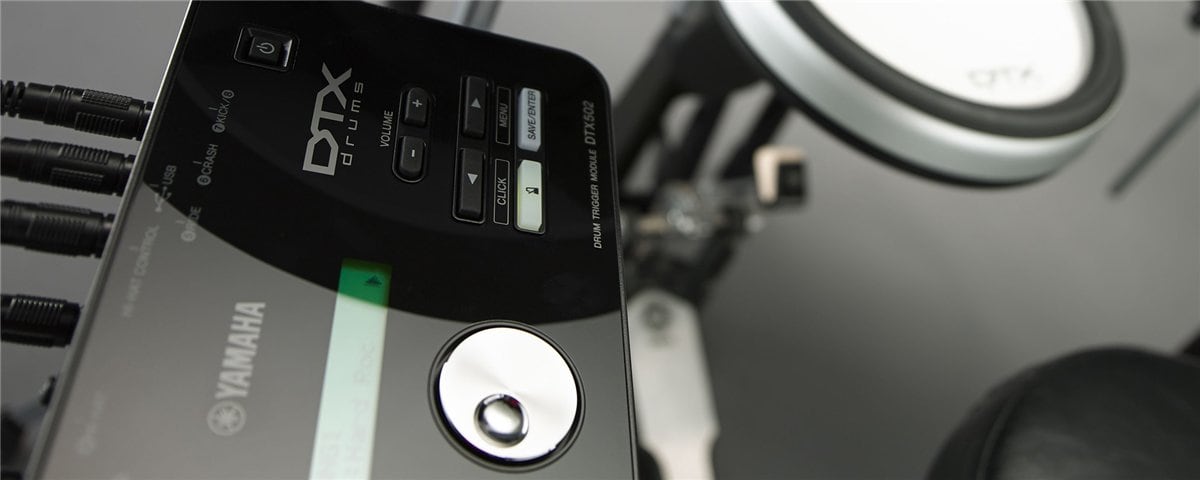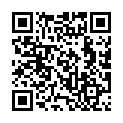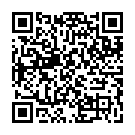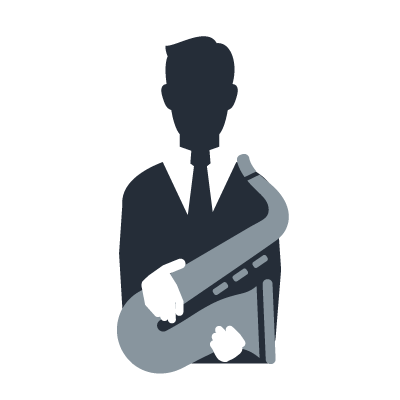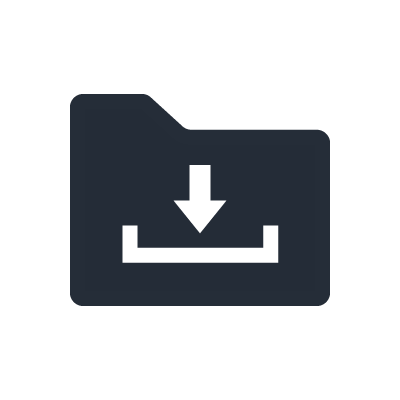Jam Along to 25 Drumming Classics only for DTX drums!
DRUMMING is FUN with FREE SONGS!!
25 popular songs from Yamaha MusicSoft—One-time free download of MIDI song data for customers purchasing any DTX502/DTX400 Series Kit! Adjust the tempo, mute the drum part, and play along!
25 free songs including "Basket Case," "Jump," and "Smoke on the Water" Play along with great pop, rock and jazz hits!
About the Promotion
Promotion Period:
From March 2014 to March 2015
For:
Purchasers of the DTX400 and DTX502 Series Electronic Drums
* Customers who have purchased the product before the promotion period can also take advantage of the offer.
How to download
You can download the 25 songs by entering the following product serial number from your computer.
For Windows users
When using PC:
Requirements
- USB cable
- Enter the serial number to the appropriate field at the bottom of the page then click "Download".
The serial number is 8 to 10 characters marked on the purchased product. - A Zip file containing the MIDI data is downloaded and stored to your computer.
- Yamaha’s free software, MusicSoft Downloader, is installed to your computer.
- Connect your computer to the DTX sound source module with the USB cable.
Following the MusicSoft Downloader’s procedure, MIDI data is transmitted from your computer to the DTX.
When using iOS device:
Requirements
- iPad, iPhone or iPod Touch
- Yamaha i-UX1 or Apple adapter (Lightning to USB Camera Adapter, 30-pin Camera Connector or Lightning to 30-pin Adapter)
- Enter the serial number to the appropriate field at the bottom of the page then click "Download".
The serial number is 8 to 10 characters marked on the purchased product. - A Zip file containing the MIDI data is downloaded and stored to your computer.
- Download Song Beats or MusicSoft Manager, Yamaha’s free applications, from the Appstore to your device.
* Musicsoft Manager is compatible only with the DTX400 Series - On your computer, use iTunes File Sharing or Dropbox* to store the MIDI data you downloaded in one of the applications.
* Dropbox is a free online storage service provided by Dropbox Inc. For details, see https://www.dropbox.com/.
Song Beats is not compatible with Dropbox. - Connect the device with the DTX by either an i-UX1 or an Apple camera adapter.
- If you are using MusicSoft Manager, transfer the data to the DTX following the normal instructions.
If you are using Song Beats, select a song in the application, and play the MIDI.
For detailed instructions, see the help menu on the applications.
For Mac users
Requirements
- iPad, iPhone or iPod Touch
- Yamaha i-UX1 or Apple adapter (Lightning to USB Camera Adapter, 30-pin Camera Connector or Lightning to 30-pin Adapter)
- Enter the serial number to the appropriate field at the bottom of the page then click "Download".
The serial number is 8 to 10 characters marked on the purchased product. - A Zip file containing the MIDI data is downloaded and stored to your computer.
- Download Song Beats or MusicSoft Manager, Yamaha’s free applications, from the Appstore to your device.
* Musicsoft Manager is compatible only with the DTX400 Series - On your computer, use iTunes File Sharing or Dropbox* to store the MIDI data you downloaded in one of the applications.
* Dropbox is a free online storage service provided by Dropbox Inc. For details, see https://www.dropbox.com/.
Song Beats is not compatible with Dropbox. - Connect the device with the DTX by either an i-UX1 or an Apple camera adapter.
- If you are using MusicSoft Manager, transfer the data to the DTX following the normal instructions.
If you are using Song Beats, select a song in the application, and play the MIDI.
For detailed instructions, see the help menu on the applications.
Features of the MIDI songs
- These 25 songs have been selected from commercially available data, popular with drummers, on Yamaha MusicSoft, as a gift to customers who purchase the DTX400 series or DTX502 series during the promotion period.
- You can mute the sound of the drum with the "minus one" setting and enjoy playing along with the music.
- You can freely adjust the tempo, so you can practice pieces you like at a tempo that suits you.
- For detailed instructions, check the users' manual for each product.
- Link to "Song Beats", the iPhone /iPad /iPod touch application, and you will expand your performing enjoyment.
- To connect and use with the DTX, you'll need an i-UX1 or genuine Apple adapter (Lightning to USB Camera Adapter, 30-pin Camera Connector or Lightning to 30-pin Adapter)
- In addition to the 25 songs, you can also purchase and download roughly 800 copyrighted songs at the Yamaha MusicSoft Web site.
25 songs
| STYLES | SONG | ARTIST |
|---|---|---|
| 8-beat | Every Breath You Take | The Police |
| Have You Ever Seen The Rain? | Creedence Clearwater Revival | |
| Yellow | Coldplay | |
| Let It Be | The Beatles | |
| Basket Case | Green Day | |
| Miss You | The Rolling Stones | |
| Hard Rock | You Really Got Me | Van Halen |
| Jump | Van Halen | |
| Black Dog | Led Zeppelin | |
| Elec Pop | Thriller | Michael Jackson |
| Poker Face | Lady Gaga | |
| Rock Shuffle | American Idiot | Green Day |
| Get Back | The Beatles | |
| Heavy Metal | Paranoid | Black Sabbath |
| Highway Star | Deep Purple | |
| 16-Beat Rock | Smoke On The Water | Deep Purple |
| Mr.Brightside | The Killers | |
| Funk Rock | I Wish | Stevie Wonder |
| Long Train Runnin' | The Doobie Brothers | |
| Spinning Wheel | Blood, Sweat & Tears | |
| 8-Beat Funk | September | Earth, Wind & Fire |
| Don't Stop 'Til You Get Enough | Michael Jackson | |
| Slow Blues | Sweet Home Chicago | The Blues Brothers |
| 4-Beat Jazz | Green Onions | Booker T. & the M.G.'s |
| New York, New York | Frank Sinatra |
Every Breath You Take
- Album :
- Synchronicity
- Artist :
- The Police
- Drums :
- Stuart Copeland
- Style :
- 8-beat
- BPM :
- 120
This song spent 8 weeks at number one in the US HOT Singles chart and 4 weeks at the top of the UK singles chart. It won a Grammy award for Song Of The Year, was named best-selling song of 1983, and is the fifth best-selling single of the 80's. The song begins with just the snare drum and bass drum driving the beat, so that when the hi-hat makes its entrance the entire drum set locks into the rhythm to form a solid 8-beat groove for this pop masterpiece. Stuart Copeland tastefully changes the beat to quarter-notes on the ride cymbal for the bridge section, then brings it back down to the hi-hat until the ending when the ride returns to play the 8-beat pulse for the fade out.
Have You Ever Seen The Rain?
- Album :
- Cosmos Factory
- Artist :
- Creedence Clearwater Revival
- Drums :
- Doug Clifford
- Style :
- 8-Beat
- BPM :
- 115
This song peaked at No. 2 on the American charts and was ranked #188 in Rolling Stone's 500 Greatest Songs of All Time and is a great example of classic 8-Beat folk-rock. Doug Clifford plays a simple 8-beat pattern throughout the entire song with no fill-ins at all. He keeps a steady "2" an "4" on the snare while the hi-hat follows the guitar part and the kick is tight with the bass and piano. He is able to build intensity in the song's different sections just by opening and closing his hi-hat, and by adding a double snare hit in the chorus just after the title of the song is sung. Finally, playing the crash along with the snare adds energy to the last chorus before coming back to the main beat and a simple ending.
Yellow
- Album :
- Parachutes
- Artist :
- Coldplay
- Drums :
- Will Champion
- Style :
- 8-Beat
- BPM :
- 85
The debut album from this British alternative group reached number one in the UK and is certified 8-times platinum, and in the US went double platinum and earned a Grammy award for Best Alternative Album in 2002. The song is immensely popular and has been covered extensively including interpretations in different languages and genres. The beat is a very simple 8-beat pattern and yet supports the dynamics of the song through creative use of closed hi-hat, ride cymbal and open hi-hat and crash. Not one tom-tom note is played in the entire song. This is a good song to practice with groove check on your DTX kit to see how the feel changes if you play ahead or behind the beat.
Let It Be
- Album :
- Let It Be
- Artist :
- The Beatles
- Drums :
- Ringo Starr
- Style :
- 8-Beat
- BPM :
- 72
"Let It Be" is the title song from The Beatles' final album released in 1970. The single reached the No. 1 chart position in the United States, Switzerland, Norway, Netherlands, Ireland, Hungary and Austria. The song features Paul McCartney on piano and lead vocals, John Lennon on bass, Billy Preston on organ, George Harrison on guitar and Ringo on the drums. The drum part begins after the first verse and chorus with a simple closed hi-hat on beats "2" and "4" with a light fill-in leading into a classic 8-beat pattern. Ringo plays a drum fill-in that follows the descending piano part before the guitar solo. He then moves to the ride cymbal for the chorus, and brings the beat down into the toms for the last verse, creating an intimate feel with an overdubbed shaker pattern. The final choruses are played on the ride cymbal and lead to the same descending fill-in that follows the piano accents to end the song.
Basket Case
- Album :
- Dookie
- Artist :
- Green Day
- Drums :
- Tre Cool
- Style :
- 8-Beat, Hard Rock
- BPM :
- 186
This song held the number one spot on US Billboard's Modern Rock Tracks charts for five weeks in 1994, and was nominated for a Grammy the following year. Many critics consider it one of the greatest punk anthems of all time. The song starts with a rocking guitar riff and the first verse melody comes in right away. This hi-hat comes in to support the rhythm, build anticipation and add more energy. The drums finally make their full appearance with the bass in the middle of the first chorus with a fury of crashes and fills that returns the song to the next verse, this time with the band in full swing. Tre Cool opens and closes the hi-hat for the different sections, and changes the pattern from 8th-notes to quarter-notes. The song has a false ending, after which Tre counts in the ending with three hi-hat accents followed by three crashes.
You Really Got Me
- Album :
- Van Halen
- Artist :
- Van Halen
- Drums :
- Alex Van Halen
- Style :
- Hard Rock
- BPM :
- 138
Van Halen's 1978 self-titled debut album is one of the most highly-regarded debut albums in rock, and 35 years after its release Rolling Stone magazine listed it at number 27 among their 100 Best Debut Albums of All Time. The song is a cover version, originally released by British rock group The Kinks in 1964. It starts with a razor-sharp guitar riff that repeats four times before the rest of the band comes with a bold accent on the "4" then crashing into the song on the next downbeat. The song is full of energy from the start, and drummer Alex Van Halen helps support the dynamics of the song by moving back and forth between riding his crashes, wide-open hi-hats and closed hi-hats. He plays drum fill-ins between the verses and throughout the hook. Coming out of the guitar solo there is a breakdown section, where the band drops out and the snare plays double-time under the melody. The song ends with four hits that flows into a classic rocking finale.
Jump
- Album :
- 1984
- Artist :
- Van Halen
- Drums :
- Alex Van Halen
- Style :
- Hard Rock
- BPM :
- 129
One of the Van Halen's most iconic songs, "Jump" appears the American rock group's sixth studio album and reached No. 2 on the Billboard album charts (topped by Michael Jackson's ‘Thriller’ which featured guitarist Eddie Van Halen on the song "Beat It"). The single rose to the No. 1 Billboard HOT 100 and Rock Singles chart positions in the US, and topped charts in Canada and Italy. Drummer Alex Van Halen used a massive drum set with four bass drums on the 1984 world tour. The main beat is a hard rocking 8-beat groove, with accents for the pre-chorus and a fill-in leading into the chorus. The syncopated rhythms during the guitar solo are especially challenging.
Black Dog
- Album :
- Led Zeppelin IV
- Artist :
- Led Zeppelin
- Drums :
- John Bonham
- Style :
- Hard Rock
- BPM :
- 165
British rock supergroup Led Zeppelin's untitled fourth album was a Top Ten album nearly everywhere and has been certified 23-times platinum in the US for sales of 23 million units. It contains some of the band's biggest hits, has won numerous awards, and in 1999 received a Grammy Hall Of Fame award. The opening track features a "call-and-response" dynamic between the vocals and main riff of the band. The rhythm is quite tricky due to a measure of 3/4 time before each riff. During the original recording session, John Bonham would click the sticks in time to signal the band when to come in. They can still be heard on the original recording. You can hear the clicks in the midi file, as well. They can help guide you when to come in after each vocal break.
Thriller
- Album :
- Thriller
- Artist :
- Michael Jackson
- Prod :
- Rod Temperton
- Style :
- Electro Pop
- BPM :
- 119
Thriller is currently the best-selling album of all time with estimates as high as 65 million copies sold. The title song reached number one on the US Billboard Hot Dance Club chart and sales of the single are estimated to be over 6.5 million worldwide. The main beat has a steady bass drum on each quarter-note and a snare back beat on the "2" and "4". However, the beat was programmed by a producer, as is often the case with pop songs. The hi-hat part was programmed without regarding the physical sticking it would take for your typical drummer to play the part. As a drummer you must use your intuition to determine the notes that you can play in the song. The hi-hat rhythm is mainly an 8th-note groove but there are some swinging 16th-notes played throughout. Try to play the beat with 8th-notes to gain confidence at first then add in the extra beats after you have developed a feel for it.
Poker Face
- Album :
- The Fame
- Artist :
- Lady Gaga
- Prod :
- RedOne
- Style :
- Electro Pop
- BPM :
- 119
This song was released in 2008 and by 2009 had become an international number one hit in 20 countries, at point in time topping all three US dance charts in a single week. It is one of the best-selling singles of all time having sold over 13 million copies. The electro beat of the drum machine is very simple and the tempo is not too fast, making it a good song to practice with groove check on your DTX kit. The beat was programmed by the song's producer, RedOne. You can play this song using any of the DTX preset kits but for a more authentic sound try one of the electronic-tone kits.
American Idiot
- Album :
- American Idiot
- Artist :
- Green Day
- Drums :
- Tre Cool
- Style :
- Rock Shuffle
- BPM :
- 186
Green Day is an American punk rock band, and here is title track from this 2004 release that won a Grammy for Rock Album Of The Year in 2005. The album went on to become a Tony award-winning Broadway Musical, and Rolling Stone magazine ranks it at number 432 on its list of 500 Greatest Songs of All Time. The song starts with a grungy guitar riff and is quickly joined by the bass and drums. When the melody of the verse is sung, the band drops out and only the bass drum is played with a straight 8th feel. When the bass and guitars come back in they have a slight shuffle that is supported by a swinging bass drum pattern. A two measure drum break is played after each chorus that later becomes a verse variation before breaking into the final chorus. The ending features a sudden stop on beat "3".
Get Back
- Album :
- Let It Be
- Artist :
- The Beatles
- Drums :
- Ringo Starr
- Style :
- Rock Shuffle
- BPM :
- 124
"Get Back" was originally released as a single in 1969 and was later the closing track of the Beatles' final album in 1970. The song reached number one in the United States, the United Kingdom, Ireland, Canada, New Zealand, Australia, France, West Germany, and Mexico. The beat is a modified shuffle pattern played on the snare drum and a snare accent with the bass drum on each quarter-note. The rhythm builds steadily with crashes that are on-the-beat to bring in the first verse. The crashes appear again in the chorus but this time with an accent on the off-beat (the "and" of beat 2) after the title is sung. This draws the attention of the listener as it reinforces the song title and the tune keeps moving forward. The chorus ends with an off-beat accent on beat 4 followed by a two-measure break before Billy Preston's electric piano solo. This break features Ringo playing a 2-beat drum fill-in derived directly from the shuffle rhythm.
Paranoid
- Album :
- Paranoid
- Artist :
- Black Sabbath
- Drums :
- Bill Ward
- Style :
- Heavy Metal
- BPM :
- 163
Paranoid is the second album from this British heavy metal band, and in 1970 it topped the UK album chart at No. 1. The song "Paranoid" is considered one of the greatest heavy metal songs and Rolling Stone ranked it number 250 on their list of 500 Greatest Songs of All Time. The tune begins with a distorted guitar riff that repeats before being joined by the bass and drums, and repeats twice more before going right into the first verse. The rhythm of the song is driven by the heavy, chugging 8th-notes from the bass and guitar. The beat of the verse follows this rhythm on the bass drum while playing solid quarter notes on the hi-hat and snare, followed by kick and crash accents at the end of each melody line. The beat changes to a quarter-note pulse for the bridge section, then returns to the main beat before ending with the same accents from the verse.
Highway Star
- Album :
- Made In Japan
- Artist :
- Deep Purple
- Drums :
- Ian Paice
- Style :
- Heavy Metal
- BPM :
- 120
"Highway Star" is one of this British group's most famous songs and the version here is one of the faster songs in the collection and a good example of Heavy Metal. The live version starts as the band is warming up, and then the pulse of the snare drum starts keeping time with the organ and bass. As the tempo of the song starts pulsing, the crowd roars and the snare drum is accented on "2" and "4". The bass drum is introduced and now the beat keeps building up into a classic 16th note drum fill-in before two big crashes that signal the first verse. Even though Ian Paice plays a single bass drum, this song has sections that are well suited for double-bass drumming.
Smoke On The Water
- Album :
- Machine Head
- Artist :
- Deep Purple
- Drums :
- Ian Paice
- Style :
- 16-Beat Rock
- BPM :
- 118
British rock group Deep Purple released this song in 1972 and it reached the number 4 position on the US Billboard HOT 100. In 2004, "Smoke on the Water" was ranked 434 on the Rolling Stone list of 500 Greatest Songs of All Time and in 2009, 37 years after its release, VH-1 ranked it at number 11 of their 100 Greatest Hard Rock Songs. The song opens with one of the most recognized guitar riffs in the history of classic rock, and is joined by a tightly closed hi-hat playing 16th-notes. Then the snare comes in on the "2" and "4", and the bass and bass drum make their entrance before the first verse which is then played with an 8-beat rock feel. For the guitar solo, a 16-beat pattern is played on the snare drum for the first part, then the band make a dramatic shift into a half-time feel, before returning to the intro pattern over the original riff and final verse.
Mr.Brightside
- Album :
- Hot Fuss
- Artist :
- The Killers
- Drums :
- Ronnie Vannucci
- Style :
- 16-Beat Rock
- BPM :
- 148
In 2005, The Killers' first album Hot Fuss was nominated for a Grammy for Best Rock Album and has since been heralded as one of the best debut albums of all time. The single "Mr. Brightside" became a US Mainstream Top 40 top-ten hit and peaked at No. 1 on the UK Indie chart. The song is an excellent example of up-tempo 16-Beat Rock. The basic pattern is close to the 16-beat rock practice song of the DTX400/502 and includes an 8-beat section as well. For fast 16th-note patterns, the hi-hat part is typically played with both hands, using your lead-hand to play the primary 8th-notes and the snare drum on "2" and "4", while your other hand plays the "e" and "a" of each beat. For the 8-Beat section, the lead-hand keeps time on the hi-hat while your other hand plays "2" and "4" on the snare.
I Wish
- Album :
- Songs In The Key Of Life
- Artist :
- Stevie Wonder
- Drums :
- Stevie Wonder
- Style :
- Funk Rock, 16-Beat
- BPM :
- 106
This song went No. 1 on the Billboard HOT 100 and Soul Singles charts, and the album earned Stevie four Grammy awards. Stevie Wonder plays the drums on this track, as he does on many of his songs. The groove here is a funky beat similar to the beat in "Thriller" but at a slower tempo with fewer bass drum notes. The bass drum plays on beats "1" and "3" and the snare drum plays on beats "2" and "4". The hi-hat part is a swinging pattern that is best played with two hands; your lead hand should play the main 8th-notes on the hi-hat and snare while your other hand plays the "e" and the "a" of each beat on the hi-hat. Try playing it with the hi-hat pedal closed until you get comfortable with the basic feeling.
Long Train Runnin'
- Album :
- The Captain and Me
- Artist :
- The Doobie Brothers
- Drums :
- John Hartman, Michael Hossack
- Style :
- Funk Rock
- BPM :
- 118
This song was a top-ten hit for The Doobie Brothers in 1973, reaching No. 8 on the Billboard HOT 100, and the album has been certified double platinum for sales of 2 million units by the RIAA. It remains a staple of classic rock radio in the US. The song begins with the rhythm guitar establishing the tempo and the band is led in by a bass fill-in punctuated by the drums on "2" and "4". The main drum groove is a solid 8-beat pattern while the percussion plays busier 16th-notes on top. Combined with the funky guitar riff and infectious bass line the rhythm of this song wants to "keep on moving" just like the long trains running that inspired the title.
Spinning Wheel
- Album :
- Blood, Sweat & Tears
- Artist :
- Blood, Sweat & Tears
- Drums :
- Bobby Colomby
- Style :
- Funk Rock Jazz
- BPM :
- 97, 195
This song is one of three Top 5 singles from the group's hugely successful second album which won a Grammy for Album of the Year in 1970 and has been certified quadruple platinum. The single version was nominated for Song of The Year and Record of The Year. The album version is presented here which includes an up-tempo jazz section in the middle and a waltz section at the ending. The song begins with the horns rising up from silence into full blast for an introductory rhythmic figure that is accented with the snare drum. The drum part has loose feel thanks to the strong bass and piano line that drives the rhythm. Bobby Colomby does a masterful job at keeping the groove and adding his own spice to the beat.
September
- Album :
- Best of Earth, Wind & Fire, Vol. 1
- Artist :
- Earth, Wind and Fire
- Drums :
- Fred White
- Style :
- 8-Beat Funk
- BPM :
- 118
This song reached number one on the Billboard R&B chart in the year of its release and the album has since been certified 5-times platinum in the US for sales over 5,000,000. It is one of Earth, Wind and Fire's most recognized songs as it has been sampled or covered by numerous artists and has been widely used in movies and television. One reason it is so popular is because the song is easy to dance to. The drum beat stays relatively the same throughout with little or no fill-ins, but does have some "stops" and "hits". While it may be tempting to play a fill-in here, in funk and dance music it is the groove that matters, and an experienced drummer knows when to keep it straight and in the pocket.
Don't Stop 'Til You Get Enough
- Album :
- Off The Wall
- Artist :
- Michael Jackson
- Drums :
- John "J.R." Robinson
- Style :
- 8-Beat Funk
- BPM :
- 118
This energetic and funky song from Off The Wall won Michael Jackson his first solo Grammy award for Best Male R&B Performance and then went on to achieve gold and eventually platinum status. It is the first song to demonstrate Jackson's prowess as a solo artist as well as his distinctive falsetto vocal style and percussive vocal hiccups. This 8-beat drum groove is typical of a pop beat as characterized by a steady hi-hat and tight integration between the kick and snare. The song has a couple of fill-ins, stops, and hits that make for rhythmically interesting transitions between the sections.
Sweet Home Chicago
- Album :
- Live at Montreux Casino
- Artist :
- The Blues Brothers
- Drums :
- Anton Fig
- Style :
- Slow Blues
- BPM :
- 123
This is a traditional 12-bar blues song credited to Robert Johnson and features a shuffle beat at medium tempo. The song is considered a blues standard and has been covered by many other artists. This live version features The Blues Brothers band with Anton Fig on drums, who plays a straight blues shuffle without playing a lot of fill-ins. There are some breaks and hits that must be accented on the drums, but the blues doesn't require the drummer to be flashy. The music requires a steady, driving pulse for the soloists to play over and the dancers to dance to. It is a long song that requires the feel to stay energetic and bouncy throughout the duration.
Miss You
- Album :
- Some Girls
- Artist :
- The Rolling Stones
- Drums :
- Charlie Watts
- Style :
- 8-Beat
- BPM :
- 108-110
"Miss You" reached No. 1 on the Billboard Hot 100 in May 1978 a month before The Rolling Stones' 16th US studio album Some Girls was released. The album reached No. 1 on the Billboard Top 200 and has sold over 6 million copies. The music was recorded in New York City and "Miss You" was heavily influenced by the discotheque scene happening at the time. Typically, disco is played with a "four-on-the-floor" bass drum pattern. Here drummer Charlie Watts mixes the quarter-note pulse between the kick and snare; sometimes not playing the hi-hat on "2" and "4" (a Charlie Watts signature) to give the groove a slight rock feeling. He keeps the rhythm solid during the breakdown by switching to a steady "four-on-the-floor" kick pattern with no snare and steady hi-hat for a traditional disco feeling.
Green Onions
- Album :
- Green Onions
- Artist :
- Booker T & the MG's
- Drums :
- Al Jackson, Jr
- Style :
- 8-Beat Jazz
- BPM :
- 135
This classic instrumental R&B song was first released as a B-side but quickly changed to the A-side due to its overwhelming popularity. The song peaked at No. 3 on Billboard's HOT 100 but hit No. 1 on the Soul Singles chart four times. The song received a Grammy Hall Of Fame award and ranks at 183 in Rolling Stone's 500 Greatest Songs of All Time. Booker T & the MG's were the house band at Stax Records in Memphis, Tennessee and were inducted into the Rock and Roll Hall of Fame in 1992. Known for his tasteful feel and groove, Al Jackson, Jr plays a tight beat "in the pocket" on this song, making it one of the most infectious 12-bar blues songs you will ever hear. This is an excellent study for aspiring groove drummers, especially if playing the song with groove check on your DTX kit.
New York, New York
- Album :
- Trilogy: Past, Present and Future
- Artist :
- Frank Sinatra
- Drums :
- Irv Cottler
- Style :
- 4-Beat Jazz
- BPM :
- 112
This song was first heard as the theme from the 1977 film of the same name and was performed by Liza Minnelli, but was then made world-famous by Frank Sinatra's version on his 1980 triple set Trilogy: Past, Present, and Future and was nominated in '81 for Grammy Song Of The Year. The song is in the traditional big band jazz style with piano, bass, guitar and drums forming the rhythm section. Trumpets, trombones and saxophones make up the brass section and this arrangement includes strings, tympani and glockenspiel. The main drum part is a 4-beat jazz groove that swings, starting with the hi-hat, then moving to the ride cymbal and building up to accents on the "2" and "4" with the snare and crash.
Notes on use
- Preparation and installation, etc. of devices, such as communication devices, software, and others, that are necessary to take advantage of the data provided during the promotion is the responsibility of the customers themselves.
- Downloading MIDI data for this promotion can only be done once by each user.
- Data supplied for the promotion is intended only for the personal use of the individual customer.
- The data is intended only to be used for transfer to the DTX, and cannot be used by transferring free of charge, secondary distribution or for commercial purposes. A third party cannot be involved in these activities.

